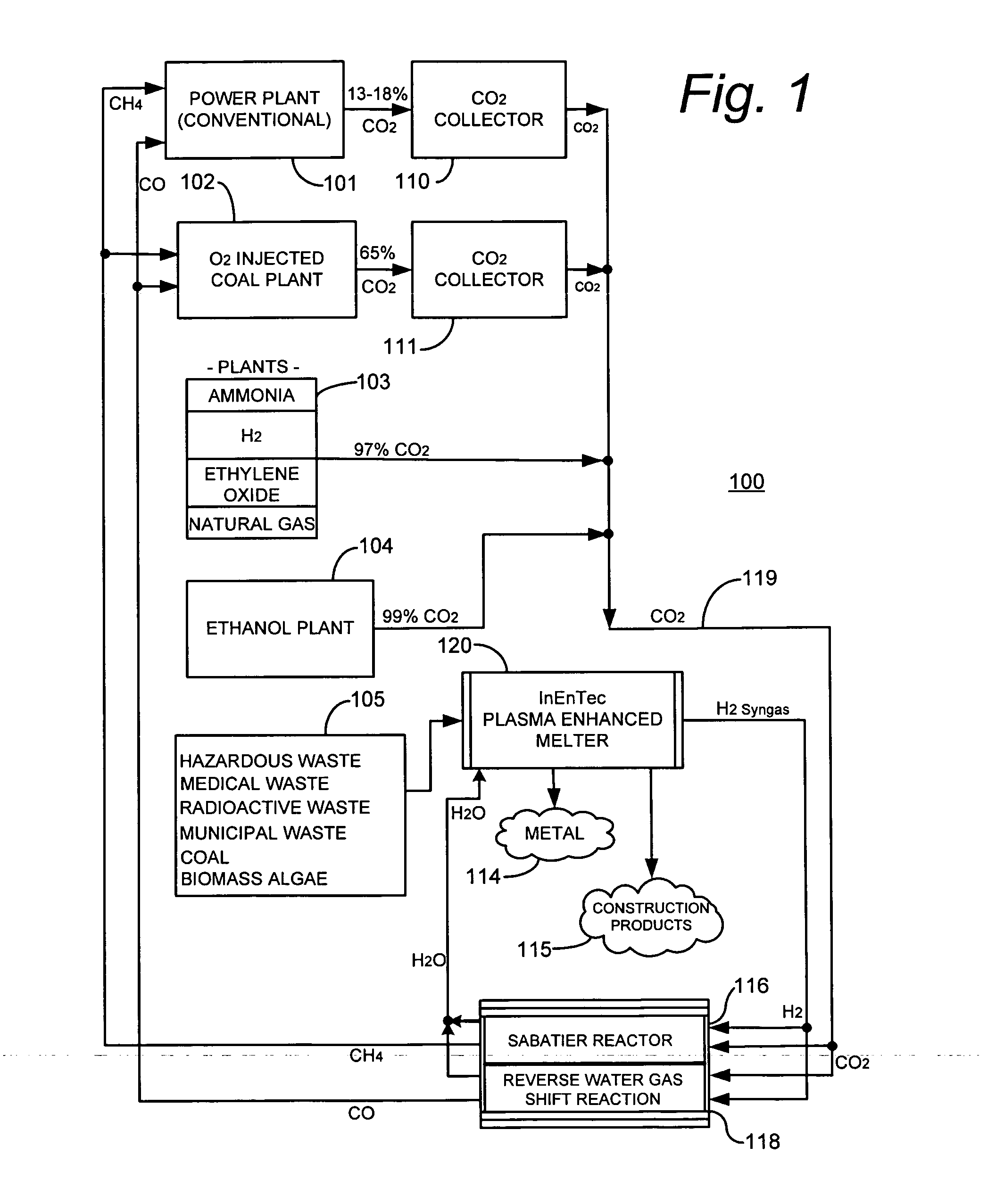Recyling and reburning carbon dioxide in an energy efficient way
a carbon dioxide and energy-efficient technology, applied in the field of carbon dioxide emissions reduction systems and processes, can solve the problems of cost effectiveness, carbon dioxide conversion, hydrogen formation, etc., and achieve the effect of reducing the amount of coal required per kilowatt hour of power produced and vastly increasing the efficiency of the plan
- Summary
- Abstract
- Description
- Claims
- Application Information
AI Technical Summary
Benefits of technology
Problems solved by technology
Method used
Image
Examples
Embodiment Construction
[0070]FIG. 1 is a simplified schematic representation of a specific illustrative embodiment of the invention. As shown in this figure, a carbon dioxide recycling system 100 includes a power plant 101, which in this embodiment of the invention is a conventional coal power plant having a base load, in this specific illustrative embodiment of the invention, of 1830 MW per day. In some embodiments of the invention, however, power plant 101 is powered by oil or natural gas. In embodiments where power plant 101 is a modern coal plant, it will emit on average about 3,458,700 Lbs of carbon dioxide per hour, or about 13 to 18% of its exhaust stream by volume.
[0071]Carbon dioxide recycling system 100 additionally is provided with an oxygen enriched coal power plant 102. Oxygen enriched coal power plant 102 issues a higher concentration of carbon dioxide in its exhaust stream, i.e., about 65% by volume. Other industrial plants 103 and 104 are also included in carbon dioxide recycling system 10...
PUM
| Property | Measurement | Unit |
|---|---|---|
| temperature | aaaaa | aaaaa |
| energy | aaaaa | aaaaa |
| electrical power | aaaaa | aaaaa |
Abstract
Description
Claims
Application Information
 Login to View More
Login to View More - R&D
- Intellectual Property
- Life Sciences
- Materials
- Tech Scout
- Unparalleled Data Quality
- Higher Quality Content
- 60% Fewer Hallucinations
Browse by: Latest US Patents, China's latest patents, Technical Efficacy Thesaurus, Application Domain, Technology Topic, Popular Technical Reports.
© 2025 PatSnap. All rights reserved.Legal|Privacy policy|Modern Slavery Act Transparency Statement|Sitemap|About US| Contact US: help@patsnap.com



